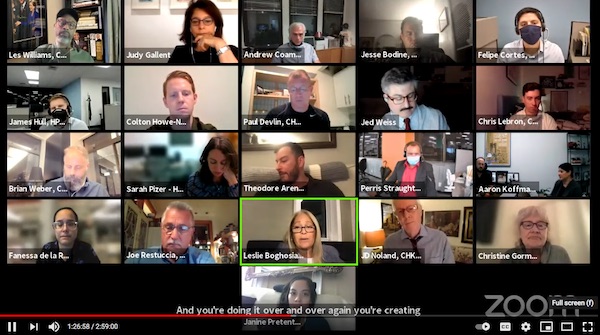
BY WINNIE McCROY | The shelf life of promises, the role residents and profit-seekers play in creating a neighborhood’s identity, and the future of affordable housing as a bargaining chip created a witch’s brew of spirited debate fit for the recently deceased month of Halloween.
At the October 6 edition of their monthly full board meeting, members of Community Board 4 expressed anger that after more than 15 years of good faith negotiations to create middle-income housing on an MTA-owned lot, the NYC Department of City Planning (DCP) and NYC Department of Housing, Preservation and Development (HPD) announced the location will be to provide housing for the formerly homeless and people living with HIV/AIDS (PLWHAs).
“A lot of people are upset—and rightly so—about the City going back on this very carefully crafted agreement,” said CB4 member Leslie Boghosian Murphy. “For some reason, many feel this [de Blasio] Administration has really ignored the needs of the working class and medium-income housing. And it’s so important to have a good balance for a healthy and vibrant neighborhood.”
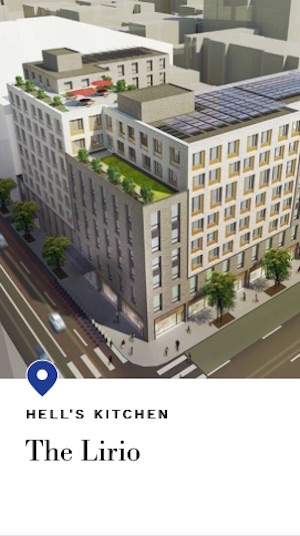
The lot at the corner of Ninth Avenue and West 54th Street was identified back in 2005 as a possible site for some of the more affordable housing that the Hudson Yards rezoning rejected. CB4 had reached a deal with the City to build housing for moderate- to middle-income civil servants and their families making up to 165% of the Area Medium Income (AMI)—$177,210 for a family of three. Now, some are saying families making this much don’t merit subsidies, at least not when balanced against the economic disparities that have arisen since the deal was brokered 16 years ago.
Referring to that 2005 deal, CB4 Chair Lowell Kern said, “The tradeoff for accepting the colossus of Hudson Yards was that we would get this middle- and moderate-income housing in a public site in Hell’s Kitchen. That’s the deal everyone agreed upon and that [at the time] CB4 Chair Corey Johnson [currently serving as NYC Council Speaker] signed off on… I’m a lawyer in my day job, and when you sign an agreement, you expect it to be honored. It can’t be changed unilaterally, which is what the City has done here.”
The developer, Hudson Companies, and the non-profit advocacy organization Housing Works, instead presented CB4 with renderings for The Lirio. Taking its name from “the oldest living tree in NYC,” as noted on the Hudson Companies website, it is currently slated to open in 2023 as a newly constructed “Affordable Housing Office, Retail and/or Community Facility” featuring “67 units of supportive housing for formerly homeless individuals, of which 59 units will be targeted for long-term survivors of HIV/AIDS,” aka PLWHAs, of whom Hell’s Kitchen houses the largest concentration, citywide. Another 44 units were earmarked for “much needed permanently affordable housing for families,” aka lower-income households up to 80% AMI—$85,920 for a family of three.
WAIT. WHAT DOES AMI MEAN, AND WHO DOES IT HELP? | Every year, The U.S. Department of Housing and Urban Development (HUD) uses data gathered by the Census Bureau to determine Area Medium Income (AMI)—what households in a particular region earn annually. This combines wages, salaries, assets, and all other sources of income for every member of a household.
Let’s look at New York City’s 2021 AMIs for a family of three. At 100% AMI, annual earning is $107,400, which is considered moderate-income (mid-range of 81—120% AMI). An extremely low-income family (0-30% AMI) tops out at $32,220. Very low-income (31-50% AMI) means a salary of $53,700 for a family of three. A low-income family income (51-80% AMI) is capped at $85,920; and middle-income (120-165% AMI) tops out at $177,210 for a family of three.
Community boards often set “affordable” housing at under 80% AMI, meaning a family of three cannot earn more than $85,920 to qualify for housing subsidies. This “low-income” tier of housing is what CB4 strives to include in almost every new building constructed in Chelsea and Hell’s Kitchen, with many residences offering 80-20 splits: 80% luxury apartments and 20% low- or middle-income.
CB4 Member Joe Restuccia said that all the housing the community board has secured has been predominantly low-income, creating 2,628 affordable units, 1,733 of which are below 60% AMI on private sites. That’s why CB4 was anticipating balancing this with a higher tier of middle-income housing on the public MTA site.
Although CB4’s original 2005 proposal for that site had no affordable housing whatsoever, their final proposal had offered a more diverse range of incomes for affordable housing, with 900 units, 40% of which would be targeted toward middle-income families. CB4 had completed RFPs [Request for Proposal] and a ULURP [Uniform Land Use Review Procedure] for their project.
But at The Lirio, 112 units of affordable housing could be available to those making as little as 40% AMI, with rents for a studio at under $800. The plans also reserve 30,000 square feet of MTA office space (most unusual for a residential building), with 10,000 square feet on the ground floor for “neighborhood retail” as its page on hudsoninc.com describes it, underneath a rendering showing that retail to be a Housing Works shop.
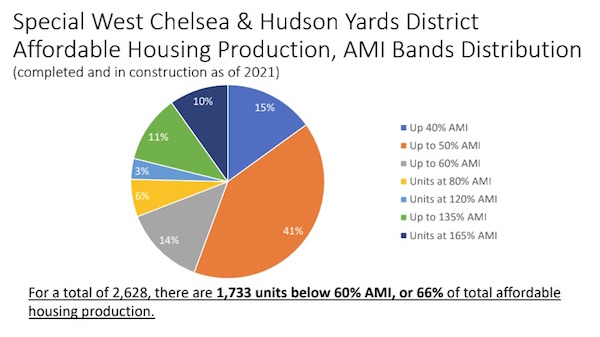
“With The Lirio we hope to meet the pressing need for permanent, affordable housing for long-term survivors of HIV/AIDS, along with supportive services built into the model,” said Hudson Companies Sarah Pizer during their presentation at the Sep. 30 Clinton/Hell’s Kitchen Land Use Committee meeting (CHKLU; click here to view the meeting on CB4’s YouTube channel). Pizer acknowledged that there was a long history behind the site, of which her development team was not a part of.
Although CB4 members praised the effort to house these vulnerable communities, many are incensed that the City betrayed their long-held promise to bring middle-class family housing to a neighborhood that desperately needs it. Some point to the dearth of quality intermediate and high schools in an area with no room for growing families. Others worry that the special district and rezoning permits needed could open the area to commercial developers.
“This is not what we made a deal for, it’s not what we were expecting, and it’s not what we can support in its current form,” said CB4 Chair Lowell Kern during that Sep. 30 CHKLU meeting.
The decision rankles some further, as it comes on the heels of the City’s move to turn another possible housing Site K, a full-block 1.2-acre lot on 11th Ave. (btw. W. 35th & 36st Sts.) into a skyscraper and two hotels, with no housing—despite the area’s desperate need.
“The whole point was to create a balance of incomes so that the people who live in this neighborhood have a chance to find affordable housing,” said Restuccia. “And if you look at those at 80-110% AMI, they can’t afford market-rate rents. But the administration is tone-deaf on this citywide need.”
HPD Press Secretary Jeremy House told Chelsea Community News that, “The City is committed to using its few remaining public sites to serve the families hit hardest by the affordable housing crisis, by developing dynamic, mixed-use affordable housing projects that serve vulnerable families, especially in transit-rich locations near job centers.”

SUPPORT FOR THE LIRIO | Chelsea and Hell’s Kitchen have historically been very welcoming to homeless shelters and supportive housing. CB4 currently houses 23 homeless shelters with 973 beds, and 24 supportive housing developments with 2,043 beds.
Christine Gorman, president of the West 55th Street Block Association, has lived on the block for over 25 years with her female partner. During the September 30 CHKLU meeting (1 hour, 27 minutes, 30 seconds into it), she noted, “As one of the first journalists nationally to write about HIV/AIDS, my work helped reduce the stigma of HIV/AIDS across the country.” Gorman recalled entering hospital wards to be with friend in their final hours. Alongside that sympathetic leaning, she noted, “We know that there’s a homelessness crisis. There is also a crisis for working class and middle class folks and the people of Hell’s Kitchen have been dealing with this. Please work with us. Don’t ignore us and please don’t make an agreement you’re not going to abide by. It’s an issue of trust… and the zoning thing! I can’t tell you how stunned I am.”
Some CB4 members expressed discomfort about the way Housing Works lined up all their long-term survivors before the board to be the face of low-income supportive housing, forcing CB4 to accept The Lirio part and parcel, or be branded as anti-homeless or even anti-gay, despite the area’s renown as a gay Mecca.
But during that CHKLU meeting, Housing Works Co-Founder Eric Sawyer noted the Lirio’s proposed PLWHA tenants are decades-long residents of the immediate area and, as such, deserve to be able to afford to live there. CB4’s members acknowledge as much, but don’t appreciate being painted as anti-gay.
Restuccia told Chelsea Community News he rejects this narrative. “What is frustrating is that the City administration is talking to our community as if we don’t support low-income and supportive housing. Our records show that we do. And now Housing Works is trying to infer that CB4 is homophobic? That is ridiculous. It might work in other community boards but not here, and certainly not with me!” said Restuccia.
There is, said Restuccia, “a constant attempt to talk about how we’re against this, and there is no question there is a citywide need [for affordable housing], but the City has multiple needs and balances them every day. This administration is dumping this on the neighborhood… And in the abstract, the project has merit. But not at this location. It’s not what Hell’s Kitchen needs, and if you object… you look like you’re anti-homeless or -AIDS, despite being welcoming of most shelters since 1991. Normally you work through things to find some version of that’s acceptable to everyone, and that’s what we want to do.”
The Board is still working on the laundry list of exactly what is acceptable, to compile into CB4’s October Full Board Meeting Item 17 letter to HPD re MTA Site- 806 Ninth Avenue. For their part, Housing Works and the Hudson Companies seem to be coming around to the realization that to build The Lirio, they will need to work more to meet the community’s long-stated needs.
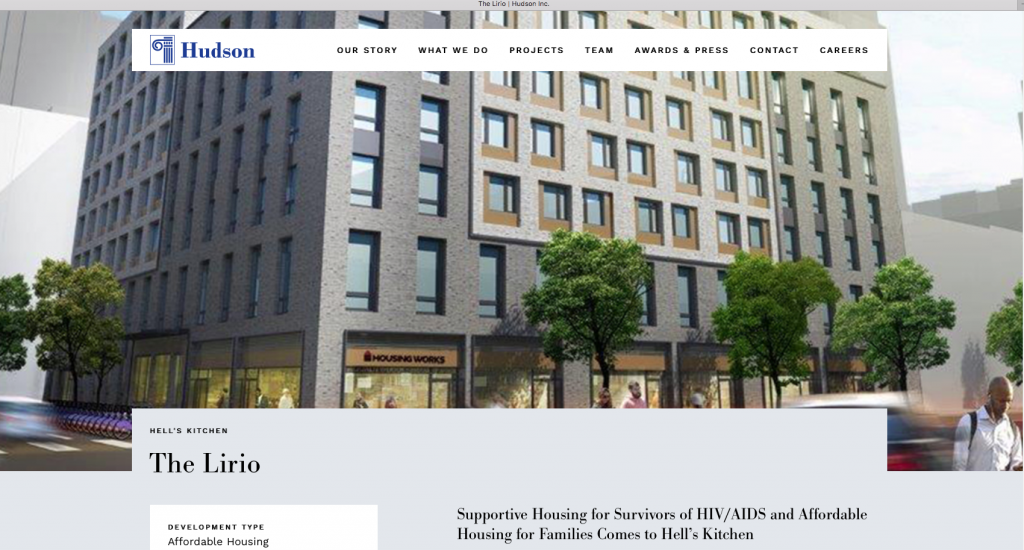
“The Lirio will provide much-needed permanently affordable housing for some of the most vulnerable New Yorkers, including longtime survivors of HIV/AIDS, in a beautifully designed and environmentally sustainable building,” said John DeSio, Vice President of Risa Heller Communications, in his capacity as a spokesperson for the Hudson Companies. DeSio’s Oct. 19 email to Chelsea Community News continued, noting, “Our development team looks forward to making this critical supportive housing project a reality for Hell’s Kitchen.”
UNRAVELING A “BETRAYAL NARRATIVE” | Some CB4 members, including Dale Corvino, supported The Lirio and advised fellow board members not to get stuck in a “betrayal narrative” over promises made and not kept.
“This ‘betrayal narrative’ is not helpful. We need to see where they’re at and try to get closer to that,” said Corvino during CB4’s October 6 full board meeting. “We can’t be demonizing people who are experiencing homelessness. We can’t extend the NIMBY element that the City did us wrong in our objection to this project. We absolutely require this as much as we require any other band of housing. But to be an integral and robust community, we also need middle-income housing.”
A similar sentiment was voiced by former District 3 City Council candidate Marni Halasa, who said that for her, it was all about who deserved subsidized housing. In her mind, someone making $138K had more options to live in other places than someone making $30K.

“If we are a city that claims to welcome immigrants, artists, teachers, essential workers, and the elderly on fixed incomes, we need to put our money where our mouth is and provide housing for those who provide for our city,” said Halasa.
Tweeting in real time as the full board meeting took place, Halasa wrote, “At @ManhattanBoard4 meeting, they use the city’s stat of 55KL homeless VS stat from @VOCALNewYork, @NYHomeless of 92K homeless to support middle income housing rather than supportive housing for low inc/homeless. They ignore cb4 member when told inaccurate.”
During the course of the interview for this article, Halasa said the National Alliance to End Homelessness quotes 80,000 homeless [78,676] on any given night; but those numbers are for NY State as a whole. The Coalition for the Homeless lists statistics of about 50,000 in NYC shelters for August 2021—right in line with CB4’s numbers. Halasa also asserted that, in a city of renters, the majority of CB4 members were homeowners.
Still, those boardmembers with institutional knowledge of CB4’s decades of negotiation with the City over the MTA property feel betrayed by broken promises. They remember first negotiations in 2005 followed by years of wrangling, noting a February 2018 meeting where the City mandated a 15% homeless requirement, which CB4 was not happy with but ultimately agreed to in their RFP. CB4 gave a 130-page presentation, with guidance from HPD on what to include. There was a ULURP done for CB4’s proposed project (a months-long process The Lirio will have to undertake). CB4 also expressed outrage that after all of their RFP and ULURP work, there was essentially radio silence for a full year, at which point they found out that the City had decided to go in another direction.
Members say they only discovered the reversal by chance, when CB4 member and current First Vice Chair Jeffrey LeFrancois saw a press release about it in a local paper and relayed the information to the Board. They were further incensed when it appeared the City kept the move under cover intentionally.
“We tried to have discussions about this with HPD for a couple of years, and they sort of rebuffed us,” said JD Noland during CB4’s October 6 full board meeting. “In fact, we just learned on Thursday that the developer had been ‘discouraged’ from engaging with the community board.”
“Normally developers are knocking down the door to talk to us and we do whatever we can do help them solve their problems with ULURP,” noted Restuccia.
During the October full board meeting, CB4 member Maria Ortiz, who lives on W. 55th St. and Ninth Ave., one block from the site, said, “I’m clear that we need more supportive housing for individuals and families, but my personal gripe is that there was already a lot of work put into creating an RFP, and then the City or HPD comes along and says, ‘You’re going to have this instead.’ They’re not considering what the people who live in the community have decided they want.”
Visibly upset during this meeting, longtime CB4 member Betty Mackintosh said, “It’s an incredible betrayal. It really sticks a knife into our trusting the City and its decision-makers that if you’ve negotiated an agreement, it can just be thrown out the window.”
Boghosian Murphy echoed that sentiment, saying, “As we have more discussion about this, hopefully the new Administration will recognize the painstaking, carefully-crafted negotiations that got us to this point, and honor the agreement they had with our community. If we can’t trust our government to honor their negotiations, where does that leave us as far as having a community voice?”

LIRIO’S APPROVAL COULD SET PRECEDENT FOR HOUSING & ZONING RULEBOOK REWRITES | Some CB4 members worry that proposed plans to convert this MTA lot into The Lirio could have a cascading effect in terms of preserving the housing stock and character of Hell’s Kitchen. When CB4 began hashing out the details for this site back in 2009, they made an agreement that the building reach a height of no more than 77 feet on the MTA side, 85 feet in the front, and 99 feet midblock, to keep it in line with other buildings in this special zoning district.
“The Special Clinton District zoning change they have proposed to push this through is completely unacceptable,” said Kern. “Once one developer has an exception, they all come running for exceptions, and it destroys the special district. This district was created for a reason, and we intend to protect it. There will be no exceptions to create buildings larger than what are allowed, because we are trying to keep the character of the neighborhood both architecturally and in terms of our neighborhood.”
The new plan initially seemed to flout those height restrictions, although HPD now says they will honor commitments negotiated under the prior Administration, including the community’s desired height requirements for development on the site, as well as the requirement that 50 percent of homes be two or more bedrooms for growing families.
Many also worry that the special zoning and permits required for The Lirio to move forward potentially opens up the area for commercial developers to snatch up the last open plots in the neighborhood for market-rate apartments, which would not benefit either lower- or middle-income renters, much less the homeless and those who need supportive housing.
“Please don’t make an agreement you’re not going to abide by. It’s an issue of trust,” said former CB4 Chair Christine Berthet during the Sept. 30 CHKLU meeting. “We know developers are trying to chip away at this special district, and here you are giving them the tools to do it.”
Finally, middle-class families are concerned that the lack of housing for growing families in Hell’s Kitchen is contributing to the decline in good intermediate and high schools.
“Elementary schools in New York are pretty good… but when you get to junior high and high school, it’s a crapshoot,” said Boghosian Murphy. She noted that while a family might be able to squeeze two younger children into a two-bedroom, it’s increasingly prohibitive to find apartments to accommodate their growing families. So, they decamp to the suburbs—like her neighbor with three kids, who headed up the Brownie troop and made doggie beds for the local animal shelters.
“We don’t want to lose that element,” said Boghosian Murphy. “I totally understand the need for low-income and supportive housing, but there has to be a healthy balance across the board. The City can’t keep raising real estate taxes that force out families, but on the other end say housing is not a priority for us.”
Kern told Chelsea Community News that the outpouring of community support for middle-income housing was made apparent to HPD during the Sept. 30 CHKLU meeting, when locals came out in droves to support CB4’s plans.
“As their [current plan] is, it’s not going to work,” said Kern. “We are waiting to see if they’re going to push through this nonsense or listen to what the community says they need. If they try to push through the ULURP by the end of the year without changes, we’re going to oppose this with everything we’ve got.”
Ultimately, CB4 has three points they’d like the City to follow: First, they must stick to the agreement. Their district already has a lot of low-income and supportive housing, probably more than their fair share, which will continue. Second, they must engage with the community and the Board to develop a site that will work. And finally, CB4 pledges to be open to a discussion to get this right. In the end, HPD seems to be willing to come to the table and discuss this.
“The Lirio project will create much-needed affordable and supportive housing for families at a range of incomes, including New Yorkers experiencing homelessness, while honoring the community’s desire for more family-sized apartments and dynamic ground-floor retail space,” said HPD’s House. “We look forward to continued conversations with the community to shape the future of this project.”
As for CB4 Chair Kern and the bulk of the Board, they won’t lie down on these changes without a fight. And, after the year of homeless people placed in four Hell’s Kitchen hotels during the COVID lockdown, this latest bump in the affordable housing road.
“People in Hell’s Kitchen are welcoming, and friendly, and kind, and supportive—and they’ve had enough,” said Kern. “You cannot destroy our neighborhood by making it all homeless shelters and supportive housing. We need a viable mix of housing and of people. You promised us middle-income housing, and that’s what we are insisting on.”
Chelsea Community News is made possible with the help of our awesome advertisers, and the support of our readers. If you like what you see, please consider taking part in our GoFundMe campaign (click here). To make a direct donation, give feedback, or send a Letter to the Editor, email scott@chelseacommunitynews.com.

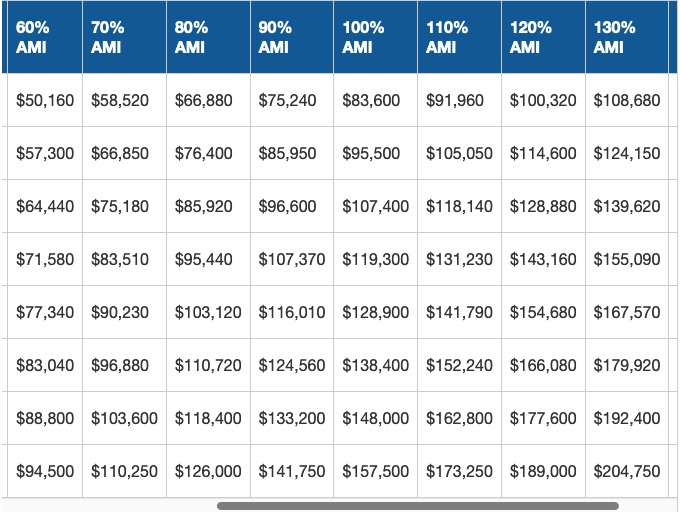
You must be logged in to post a comment Login